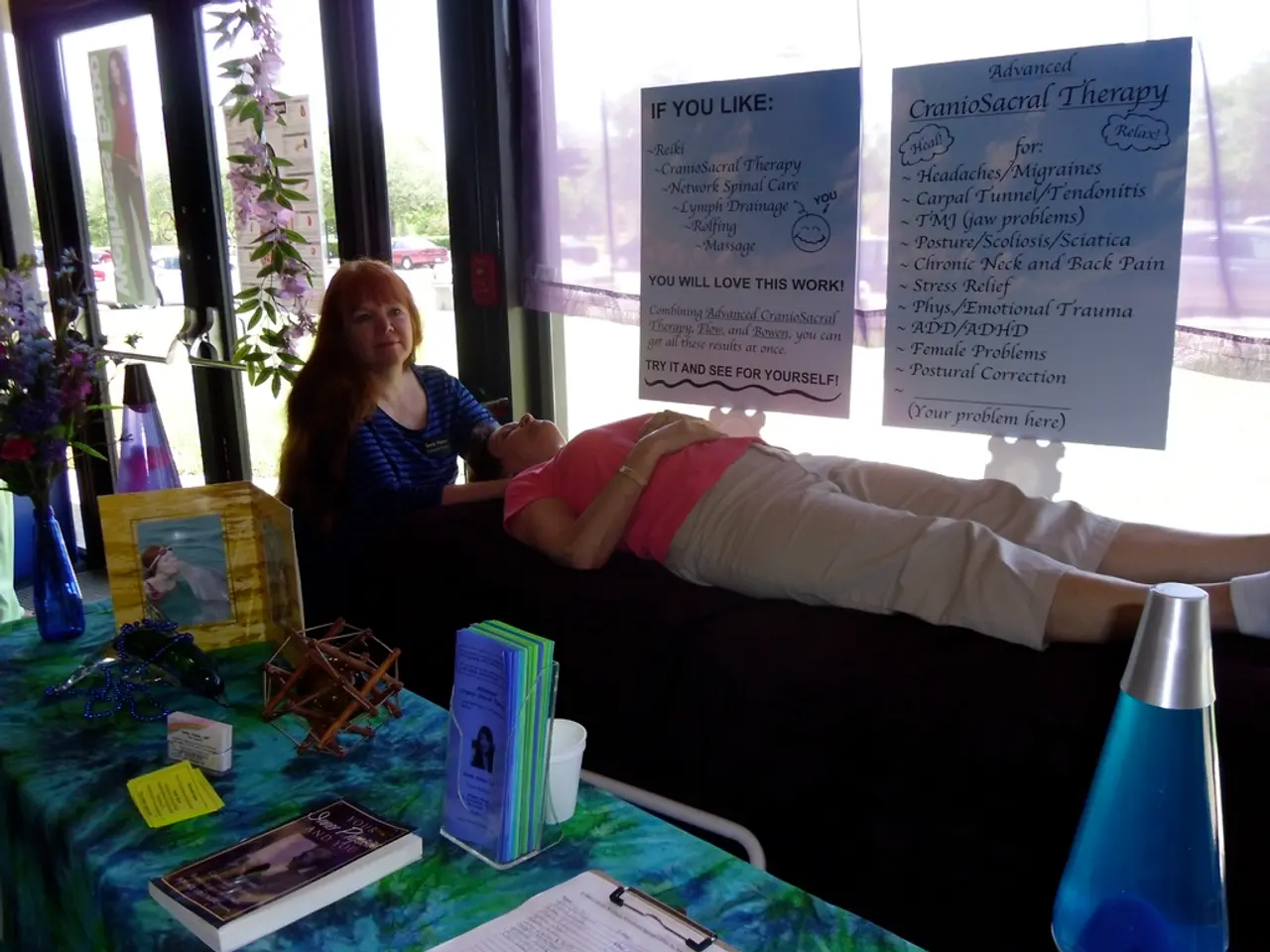Does physical therapy aid in managing symptoms of osteoarthritis?
Physical therapy is a common and effective non-medication, nonsurgical treatment for osteoarthritis, a joint disease that affects over U.S. adults. This condition involves the breakdown of cartilage within the joint, leading to joint pain, stiffness, and decreased mobility.
The type of physical therapy treatment may depend on the severity of symptoms and the joint involved, including hands, knees, hips, lower back, and neck. A physical therapist will tailor the exercises to the individual patient's needs, ensuring good technique and gradual progression, while considering symptom variability and managing flare-ups.
One of the main benefits of physical therapy for osteoarthritis is pain reduction. Exercise therapy decreases pain by improving joint lubrication, strengthening muscles that support joints, and enhancing circulation to joint tissues.
Improved joint mobility and flexibility are also key benefits. Stretching and range-of-motion exercises help maintain or increase joint movement capabilities, helping to counteract stiffness.
Strength training around affected joints is another advantage of physical therapy. This reduces joint load and improves functional ability. Resistance band exercises, for example, strengthen muscles surrounding affected joints without excessive joint strain.
Low-impact aerobic activities such as swimming and walking enhance overall fitness, which is important to reduce joint stress by maintaining healthy body weight. Losing weight, if overweight, can help ease the stress on the joints and reduce pain for people with osteoarthritis.
Practices like Tai Chi and Pilates also offer benefits. Tai Chi, a mindful practice of slow, flowing movements, improves joint flexibility, balance, coordination, and reduces arthritis pain while promoting relaxation and a mind-body connection. Pilates, with its low-impact controlled movements, emphasizes core strength, posture, and flexibility, providing stability and reducing fall risk for osteoarthritis patients.
In addition to these physical benefits, exercise in osteoarthritis physical therapy can also improve mental well-being, reducing anxiety and stress linked to chronic pain.
Physical therapy can also help maintain independence and functional ability. Consistent exercise supports mobility, balance, and the capacity for daily activities, helping patients stay independent longer.
In some cases, a doctor may also recommend that a person uses steroid injections alongside physical therapy. A 2020 randomized trial compared people doing physical therapy with those taking steroid injections and found that the group that had physical therapy reported less pain and functional disability after 1 year.
Supportive devices, such as a cane or walker, may also help improve a person's ability to walk safely with osteoarthritis.
While physical therapy can help many people with osteoarthritis, it's important to note that no improvement in functioning may occur with physical therapy for some individuals. In extreme cases, joint replacement surgery may be an option.
In conclusion, physical therapy is a valuable tool in managing osteoarthritis. It employs a combination of low-impact aerobic exercise, targeted stretching, strength training (often with resistance bands), and mind-body practices like Tai Chi to improve pain, joint function, muscle strength, and overall quality of life. Always consult with a healthcare professional before starting any new exercise regimen.
References:
- American Physical Therapy Association. (2021). Osteoarthritis. Retrieved from https://www.moveforwardpt.com/SymptomsConditionsDetail.aspx?cid=384778&csid=384778
- Arthritis Foundation. (2021). Exercise for osteoarthritis. Retrieved from https://www.arthritis.org/health-wellness/healthy-living/fitness/exercise/exercise-for-osteoarthritis
- Mayo Clinic. (2021). Osteoarthritis. Retrieved from https://www.mayoclinic.org/diseases-conditions/osteoarthritis/diagnosis-treatment/drc-20374962
- National Institute of Arthritis and Musculoskeletal and Skin Diseases. (2020). Osteoarthritis. Retrieved from https://www.niams.nih.gov/health-topics/osteoarthritis
- WebMD. (2021). Osteoarthritis. Retrieved from https://www.webmd.com/osteoarthritis/default.htm
Other joint pain beyond osteoarthritis may respond positively to physical therapy, offering a non-invasive treatment option. Nutritional modifications, such as maintaining a balanced diet and managing body weight, can also complement physical therapy for optimal health-and-wellness.
The mental-health aspect of osteoarthritis management should not be overlooked. Regular exercise and physical activity can contribute to decreased stress and anxiety, thereby boosting mental well-being.
Physical therapy regimens may incorporate different approaches like fitness-and-exercise routines that cater to injured joints but minimize strain, such as yoga or swimming.
Individuals may find they benefit from alternative physical therapies that focus on mental health, like mindfulness practices or guided meditation, which can help manage chronic pain. By considering all aspects of treatment, including physical therapy, nutrition, and mental health practices, one can pursue a comprehensive approach to managing osteoarthritis and otherjointpain.




